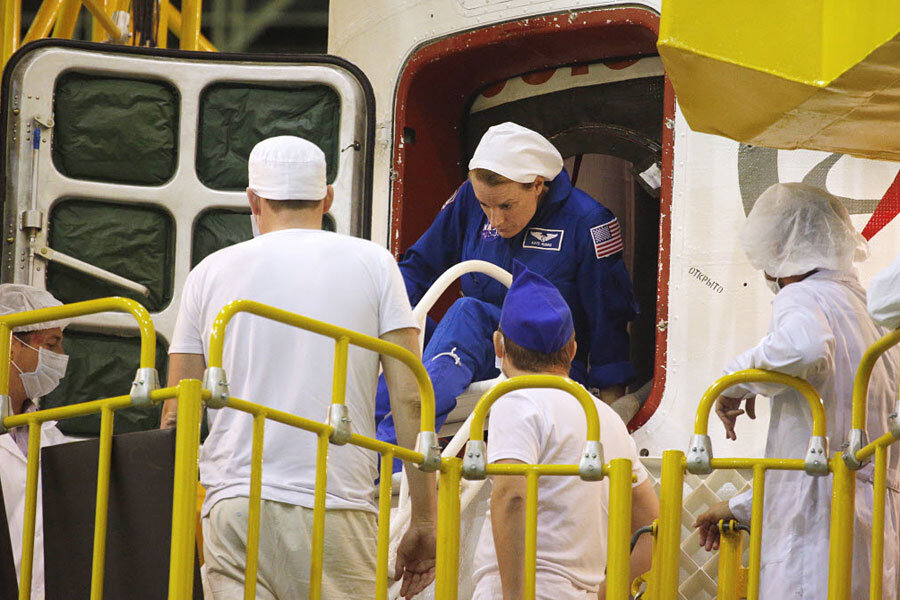This biologist-turned-astronaut could be the first to sequence DNA in space
Loading...
Cancer biologist-turned-NASA astronaut Kathleen Rubins will spend much of her four-month stay on the International Space Station conducting biology and physiology experiments. Dr. Rubins is set to become the first person to sequence DNA in space.
But she will have to wait a couple of extra days before she can settle into the laboratory in microgravity.
Usually it takes just six hours for astronauts to reach the ISS from the time they take off. But the crew of the Soyuz MS-01 will be in orbit for two days before rendezvous with the space station early Saturday.
The flight, scheduled to blastoff from the Baikonur Cosmodrome in Kazakhstan at 9:36:41 p.m. Eastern time Wednesday (GMT-4, 7:36 a.m. Thursday local time), is the first flight since the Soyuz ferry craft has been upgraded. The crew will use the extra time to perform tests on the vehicle's upgraded systems.
Rubins will be shooting off into space alongside veteran Roscomos cosmonaut and Soyuz MS-01 commander Anatoly Ivanishin, and flight engineer and former Japanese 767 airline pilot Takuya Onishi.
"You expect and you hope that everything goes according to plan, but if it doesn't, these are the two guys you want to be with you in your spacecraft," Rubins said, according to CBS News. "I feel incredibly fortunate to be able to fly with these guys."
Rubins was selected from a pool of 3,500 people who applied to be part of NASA's astronaut training class in 2009. This will be her first spaceflight.
Before becoming an astronaut, Rubins was a cancer biologist. She also was involved in developing therapies for Ebola and Lassa viruses.
Once settled in on the space station, Rubins will get back to research. She will participate in many science experiments in all fields, from space and physical sciences, to biological and physiological investigations.
The space station is "a really neat laboratory because it's the only place we can actually study gravity as a variable," Rubins said. In Earth-bound laboratories, gravity is a constant.
"It's really a way to investigate what happens to physiological beings, to their individual cells and their tissues when you don't have gravity," she said, "It's a lot of basic research. But we can understand things about physiological processes because we're using the space station and microgravity there, we can discover processes we've never been able to before on Earth."
When asked how she'll spend her free time on the space station, Rubins replied with a laugh, saying she'll fill the time with as many experiments as possible.
"When I'm working in the lab, it doesn't seem like work to me, that's sometimes how I relax," she told CBS News. "You can call it work or you can call it play, but ... watching natural phenomena and making observations about them, that's science."






